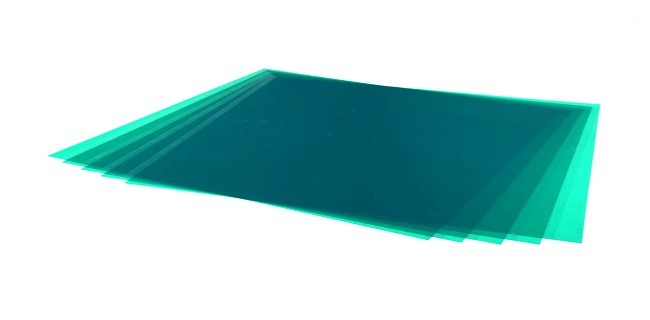What do you know about reflective polarizer films?

A display system includes a display panel, a backlight, and a reinforced reflective polarizer disposed between the display panel and the backlight. The reinforced reflective polarizer includes a first layer formed from a polymer matrix embedded with inorganic fibers. The reinforced reflective polarizer also includes a second layer bonded to the first layer. The second layer includes a reflective polarizing layer.
The film may optionally comprise one or more layers in addition to the reflective polarizing layer and the composite material layer or layers. These additional layers generally work to improve the integrity of the composite optical body. In particular, the additional layers can serve to bond the reflective polarizing layer to the composite layer. In some implementations, the composite layer and the reflective polarizing layer will not form a strong bond directly to each other. In such implementations, an intermediate layer advantageously adheres the composite layer to the reflective polarizing layer. The composition of the interlayers is typically chosen to be compatible with the composite layer and the reflective polarizing layer. Intermediate layers can bond well to both the optical film and the dimensionally stable layer. Therefore, the choice of material used in the intermediate layer will often vary depending on the composition of the composite layer and the reflective polarizing layer.
Field of the Invention
The invention relates to optical films and more particularly to reflective polarizing films reinforced with inorganic fibers.
Technology Background
Optical films, such as reflective polarizer film, are often used in displays, for example, to manage the propagation of light from a light source to a display panel. In particular, a reflective polarizing film is often used to transmit, for the most part, a polarization of the light striking a liquid crystal display (LCD) panel and to reflect, for the most part, the light onto the screen. orthogonal polarization. . The reflected light is recycled and returned to the reflective polarizer after at least some of the light has had its polarization altered to a state that, for the most part, is transmitted through the polarizer. This recycling process results in an increase in the amount of LCD reflective film panel.
Summary
One embodiment of the invention relates to an optical film which comprises a first layer having a polymer matrix embedded with inorganic fibers. A second layer joins the first layer. The second layer includes a reflective polarizing layer.



